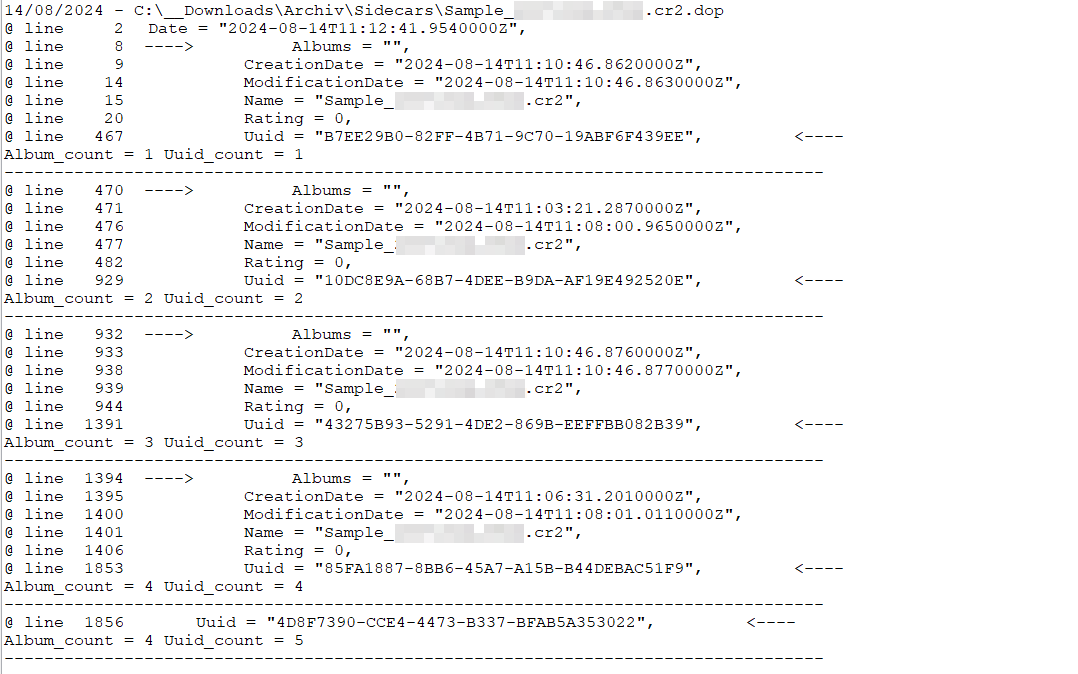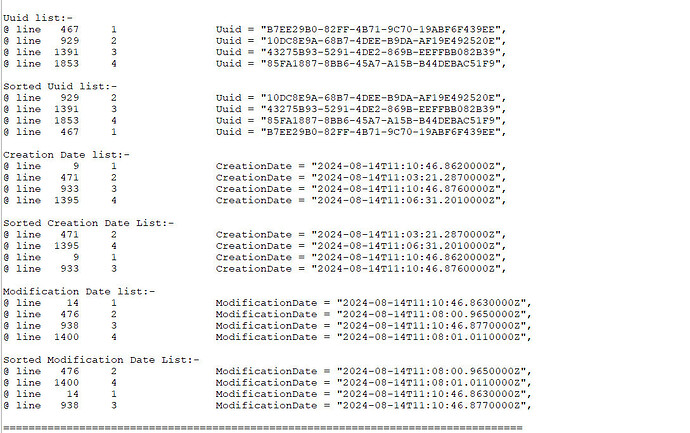@platypus the answer is yes and yes but actually the basic coding, i.e. minus all the good checks, proper timestamps etc. etc. is simple enough and currently I have the following for a DOP from another user
So ahead of the first “Albums” entry is the header and the trailer is between the last but one “Uuid” entry (Line 1105) and the end of file and includes the last “Uuid” shown at line 1110
As far as I am concerned the lines between the “Album” and associated “Uuid” entry are the details for the copy, [M] or VC or … and it should be possible to do a number of things with that data, allegedly!!
@Joanna As do I and many others but I am trying to see how close I can get to a working “Unwanted VC” fix as possible. My ideal fix is an intact database with intact ‘Projects’ and both copies but reversed and I have managed that manually a number of times until I didn’t for some reason(s)!?
Plus I want to avoid going anywhere near the database if possible, other than automatically backing it up, along with the original DOPs and sidecar files etc.
The task of doing the job by hand is error prone, hence the coding which is easy to fix and try again and again and …
Its a hot day here in the South of the U.K., I still have 4 rack bolts to fix but only mad dogs and Englishmen go out in the midday sun, I have returned to some coding!



